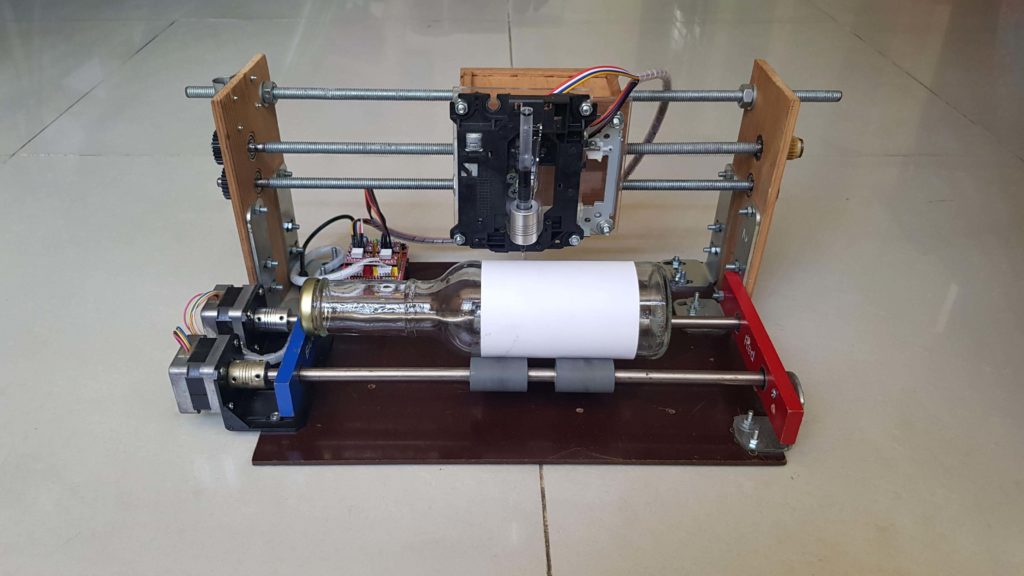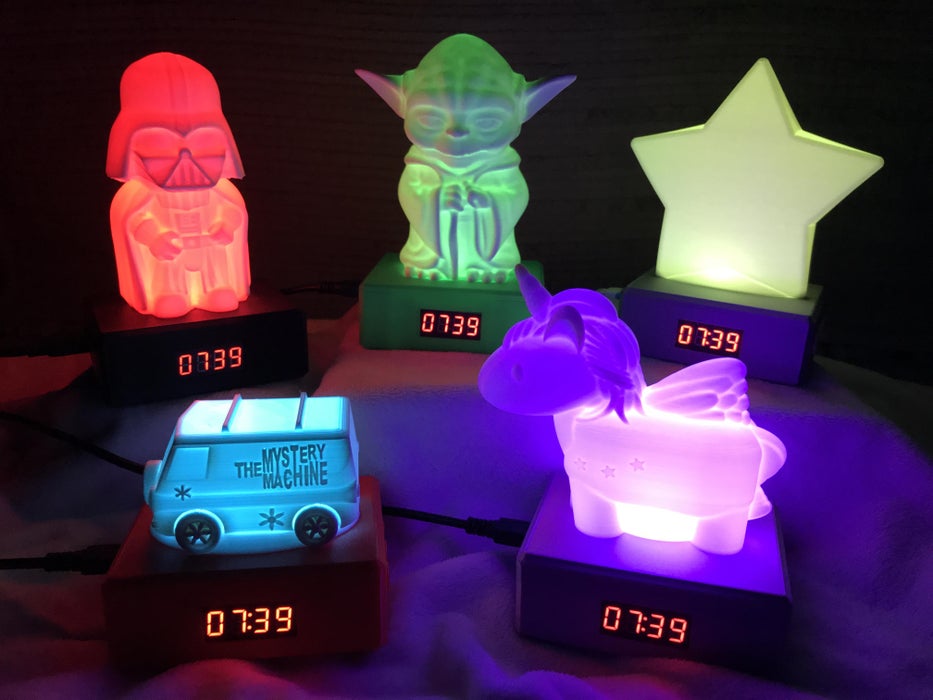Drones are fun to fly, and it’s possible to do limited flying using brainwaves. The headset senses my brainwaves and transmits them to a small computer. When I increase my attention level, the computer converts the signals and passes them to the drone’s controller, which I have connected to the computer. When I relax my mind, the drone lands.
External News
Draw on bottles using a CNC plotter made from old printer rollers and other scraps
To label used bottles that would otherwise go to waste, “tuenhidiy” created a CNC plotter that itself consists mostly of scraps!
The machine’s X and Z axes are formed out of a pair of old CD/DVD players, but instead of a traditional Y axis, it actuates two printer rollers to turn a bottle forwards or backwards. This allows the marking pen to be placed in just the right axial position, while still being very similar to a fully Cartesian (XYZ) plotter controls-wise.

Robin Grosset Takes a RaspberryPi Pico’s RP2040 to New Heights with an Overclock to 420MHz
Impressive overclock boosts the RP2040’s Arm cores to more than three times their official upper limit of 133MHz.
Engineer Robin Grosset has pushed a Raspberry Pi Pico and its RP2040 microcontroller to its limits, successfully overclocking the chip from its stock 133MHz to an impressive 420MHz.
Launched earlier this year the Raspberry Pi Pico development board plays host to Raspberry Pi’s first in-house silicon, the RP2040 microcontroller. Officially, the chip can be clocked at speeds of up to 133MHz — but unofficially the part can run considerably quicker, as is often required to get the best performance out of hacks like turning one into a fully-functional BBC Micro emulator.
IoT Security: Backdooring a smart camera by creating a malicious firmware upgrade
In this video we look at reverse engineering a basic firmware format of a commonly found IoT camera – and then creating a backdoored firmware that calls back to our command & control server and allows us to remotely control it!
Detecting Pokemon on an Arduino using TinyML and TensorFlow
Using colors to predict whether this is Pikachu or Bulbasaur…
The deployment environments of a machine learning (ML) model are changing. In recent years, we went from locally training models and running them on standalone scripts to deploying them in massive and specialized setups. However, the industry hasn’t been focusing only on large-scaled-productionized ML, but also its small, portable, and accessible counterpart—for machine learning has found a place in embedded systems.

Controlling a ESP8266 with Alexa
Here is an easy project using a Echo Dot (Alexa) to control my ESP8266. I give it simple commands (Alexa, lights, off) and the command shows on the LCD screen attached to the ESP8266. Actual relays will be the next step to attach.
The project is based on the Adafruit tutorial at https://learn.adafruit.com/easy-alexa-or-echo-control-of-your-esp8266-huzzah/overview
with LCD and other modifications made by me. My code is found at https://pastebin.com/NjMcsTRh
Thumbstick for PC Gaming – using an Arduino UNO!! (*PC Gaming Joystick*)
PC gaming was only lacking one thing in my eyes… analogue movement. There are a few projects which tackle this, but they are a little incomplete, or require an Arduino micro to be seen as a game controller. My take on this uses an Arduino Uno, and should basically be good to go straight away!
The Hidden Source Code in Dragon’s Lair (NES)
What secrets are hidden inside the Japanese and European ROMs for Dragon’s Lair (NES)? Let’s take a look inside!
1000s Of Steam Games Now Let You Play With People Who Don’t Even Have Steam Accounts
An update to Steam released earlier this week has, tucked away in its changelog, a very cool piece of news: if you’re playing a game that supports Remote Play Together, you can now invite anyone to play with you, even if they don’t have a Steam account.
This won’t work for all Steam games, only those that support Remote Play Together. But if the game you’re playing does—and there are a lot of them, from Overcooked to Enter The Gungeon to Spelunky to the LEGO games—then only one person has to own the game on Steam. Everyone else they invite only has to click on their invite and they can get playing.

Kids Light Up Clock 2.0
The first version of my Light Up Clock for Kids I published a few years ago. At the time my wife and I were going crazy with our young kids (between 2 and 4 years old) who could not understand how to “wait for the 7” on the clock before coming in and waking us up early in the morning! Now the youngest (the 4th and hopefully the last) is 3 years old and this clock has been life-saving the last few years! Enhanced over time, it has provided a HUGE solution to our “child-waking-us-up-at-insane-hours-of-the-morning” problem!!!

